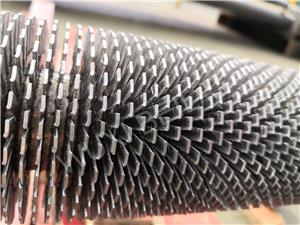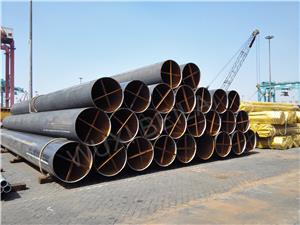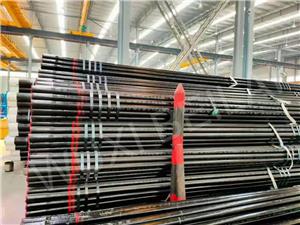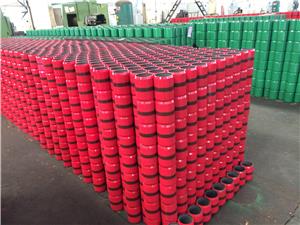Driven by Pressure: BEILAI Guide to Boiler Tube High Pressure Rating
At BEILAI, we manufacture and qualify advanced boiler tube products for thermal power, industrial steam generation, and process heating. The phrase boiler tube high pressure rating captures the essential promise behind every tube we deliver: predictable performance under severe temperature, pressure, and cycling loads. This comprehensive guide outlines how materials, metallurgy, geometry, codes, and testing converge to define the boiler tube high pressure rating your plant can rely on.
What Does “High Pressure Rating” Mean for a Boiler Tube?
In simple terms, the boiler tube high pressure rating is the maximum pressure a boiler tube can safely sustain at its design temperature over a specified life. It is not a single number pulled from a catalog; it results from allowable stress data, creep-rupture properties, corrosion allowances, weld joint efficiency, and dimensional tolerance. A modern boiler tube operates close to metallurgical limits, which is why the correct interpretation of the boiler tube high pressure rating is central to safe, efficient power generation.
Where High-Pressure Boiler Tubes Work
Waterwalls and risers in utility boilers
Superheaters and reheaters operating above 540–600 °C
Economizers and preheaters with cyclic thermal loading
Waste-to-energy units with aggressive flue gas chemistry
Industrial package boilers in refinery and petrochemical services
Each of these sections imposes different damage mechanisms on a boiler tube—from creep and oxidation to corrosion fatigue—so the qualified boiler tube high pressure rating must reflect the true duty.
Material Families That Drive a Boiler Tube High Pressure Rating
Choosing the right alloy is the foundation of any boiler tube project. BEILAI offers a deep portfolio to match temperature and pressure windows:
Carbon steel (e.g., SA-210, SA-178): economical base materials for lower-temperature sections; the boiler tube high pressure rating is limited as temperature rises.
Low-alloy ferritic (1–2.25Cr–Mo): increased creep strength for superheater and reheater service.
Advanced ferritic/martensitic (T/P91, T/P92): high creep strength and good oxidation resistance; elevate the achievable boiler tube high pressure rating at 580–620 °C.
Austenitic stainless (TP304H, TP347H, Super 304H, HR3C): superior corrosion/oxidation resistance and creep strength for the hottest runs; often the highest boiler tube high pressure rating at given diameters.
Nickel-base alloys (Inconel/Alloy 625/740H, etc.): niche extreme services with exceptional strength retention—premium options where the boiler tube must survive the harshest environments.
Geometry and Its Effect on Pressure Rating
Even for the same alloy, outside diameter (OD), wall thickness (WT), ovality, and surface finish affect the boiler tube high pressure rating. Thicker walls increase burst strength but add weight and reduce heat transfer. Tighter ovality and stringent WT tolerance reduce local stress intensification, improving the usable boiler tube high pressure rating. BEILAI controls dimensional tolerances on our boiler tube lines to ensure predictable hoop stress behavior.
Codes, Standards, and Allowable Stress
The boiler tube high pressure rating is typically established per recognized codes and standards that define allowable stresses across temperature. Designers commonly consult ASME Boiler and Pressure Vessel Code, EN standards, and project specifications. Our boiler tube documentation packages include material test certificates, heat treatment records, and dimensional reports that align with these requirements and substantiate the declared boiler tube high pressure rating.
Manufacturing Routes That Protect the Rating
Our seamless and welded boiler tube lines employ controlled piercing, extrusion, cold drawing, normalizing, quenching and tempering, or solution annealing depending on the alloy. Tight process windows preserve grain structure and precipitate stability—both of which underpin the boiler tube high pressure rating. Cold work levels are managed to avoid embrittlement; heat treatment ensures uniform properties through the wall, raising confidence in every boiler tube we ship.
Welding, Joints, and System-Level Rating
In any boiler, the system is only as strong as its weakest joint. Weld procedures (WPS/PQR), filler metals, preheat/interpass control, and post-weld heat treatment (PWHT) determine whether the joint retains the intended boiler tube high pressure rating. BEILAI supports fabricators with welding advisories tailored to each boiler tube grade, ensuring seam and attachment welds meet or exceed the tube’s base-metal performance.
Degradation Mechanisms to Consider
Creep: time-dependent deformation at high temperature; the core limiter of the boiler tube high pressure rating.
Oxidation/Scale: increases metal temperature and reduces thickness, eroding boiler tube margin.
Fireside corrosion and sulfidation: chemistry-dependent wastage that undermines the boiler tube high pressure rating.
Thermal fatigue: cycling damage from start-stop duty.
Flow-accelerated corrosion: typically in lower-temperature wet sections, thinning the boiler tube wall.
Inspection and Testing that Prove the Rating
To substantiate the boiler tube high pressure rating, BEILAI applies a rigorous QA program: chemical analysis, tensile and impact testing at temperature, hardness control, creep-rupture sampling (when specified), and comprehensive NDE (eddy current/UT). Hydrostatic or pneumatic tests validate integrity. Each boiler tube lot is fully traceable, providing confidence that the rated pressure can be safely used throughout service.
Typical Dimensions and Capability
| Parameter | Range / Option |
|---|---|
| Outside Diameter (OD) | 12.7 mm – 114.3 mm (larger on request) |
| Wall Thickness (WT) | 2.0 mm – 25.4 mm depending on alloy and duty |
| Length | Up to 24 m; exact cut lengths available |
| Delivery Condition | N, Q&T, Solution Annealed; stabilized grades on request |
| Ends | Plain, beveled, finned, or swaged per drawing |
| Documentation | MTC EN 10204 3.1/3.2, NDE maps, heat charts, C of C |
Designing for a Realistic Boiler Tube High Pressure Rating
Engineers should combine code allowables with real corrosion/oxidation rates, expected cycling, and water chemistry. A conservative corrosion allowance may raise reliability without oversizing the boiler tube. BEILAI’s application team can provide thickness selection curves, suggested alloys for a given gas composition, and surface treatment advice to preserve the intended boiler tube high pressure rating over decades of operation.
Surface Engineering and Life Extension
Coatings, overlay cladding, shot-peening, and finning can improve heat transfer, reduce tube metal temperature, and extend the safe boiler tube high pressure rating. In waste-to-energy, ceramic or alloy coatings protect against chloride-induced corrosion; in coal units, optimized fin geometry reduces gas-side resistance. All surface measures are assessed for their effect on the thermal balance of the boiler tube bank.
Water Chemistry and Deposit Control
Scale and deposits raise metal temperature, shrinking the available margin behind the boiler tube high pressure rating. Good chemistry control—oxygen scavengers where applicable, pH management, and blowdown—keeps the boiler tube inside its safe window. Our team can coordinate with your chemists to align material choice and cleaning intervals with the target boiler tube high pressure rating.
From Procurement to Commissioning
Define duty: gas chemistry, gas/steam temperature, target life, cycles—foundation of the boiler tube high pressure rating.
Select alloy & thickness: optimize creep margin and heat transfer for each boiler tube bank.
Qualify welding: WPS/PQR that preserve rating at joints.
Manufacture & inspect: BEILAI QA verifies every boiler tube against specification.
Install & monitor: alignment, drainability, temperature mapping—protect the boiler tube high pressure rating in real operation.
Why Partner with BEILAI
Material breadth: full suite of carbon, low alloy, advanced ferritic, austenitic, and nickel-base boiler tube grades.
Process control: tight dimensional tolerance boosts usable boiler tube high pressure rating.
Project support: from design to outage, we help sustain your boiler tube performance.
Global logistics: strategic inventories and reliable delivery.
Conclusion
High-pressure steam is unforgiving. A dependable boiler tube high pressure rating is the outcome of smart alloy selection, precise manufacturing, qualified welding, and disciplined operation. With BEILAI as your partner, every boiler tube is engineered for confidence—delivering output, efficiency, and safety year after year.




